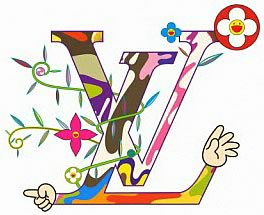
AN ANALYSIS OF THE COLLABORATIONS BETWEEN ARTISTS AND LUXURY FASHION BRANDS
My thesis, “An Analysis of the Collaborations Between Artists and Luxury Fashion Brands,” explores the collaborative relationship between contemporary artists and luxury fashion, with a concentration on the Louis Vuitton Moet Hennessy case study. I began by exploring the question of whether artists and luxury brand partnerships have blurred or erased the boundary between the gallery and the gift shop by creating art that functions primarily as a mass commodity. I propose a system with art, artist, and museum in column one; design, designer, and retailer in column two; and souvenir, manufacturer, and gift shop in column three. While it would appear that “art products” would fall between column one (art) and column two (fashion), the creation of these art products actually unbinds the entire system and fuses column one (art) with column three (commodity). I thought it necessary to define what I mean by “art,” “luxury,” and “commodity.” By analyzing economic theories such as the Marxist commodity and Veblen’s conspicuous consumption, I reached the conclusion that the twentieth century marks a period of “mass conspicuous consumption,” which has led to the democratization and commodification of luxury. Therefore, my thesis finds that luxury fashion products do constitute commodities and the collaboration between luxury and artists results in the commodification of high art. I primarily examine the relationships between LV and Takashi Murakami and LV and Yayoi Kusama. I look at Murakami’s famous MOCA exhibition, where his LV handbags were on sale inside the gallery. Similarly, I scrutinize Kusama’s London Selfridge LV display and pop-up shop, where she has ultimately transformed a department store into a gallery space. Then, I analyze multiple case studies about Murakami’s complete immersion into the LV brand. Luxury brands collaborate with renowned high artists to reposition themselves within an exclusive niche. The paradox is that these partnerships result in lowering the artist from a higher cultural plane, onto the plane of mass commercialism. The consequence of these relationships is the commodification of the artist and their artwork.
SECTOR B: Art and Culture of Seeing
ADVISERS: Gwendolyn DuBois Shaw (ARTH) | Peter DeCherney (ENGL/CINE) | Matt Freedman (FNAR) | Michael Leja (ARTH)

 Visual Studies
Visual Studies